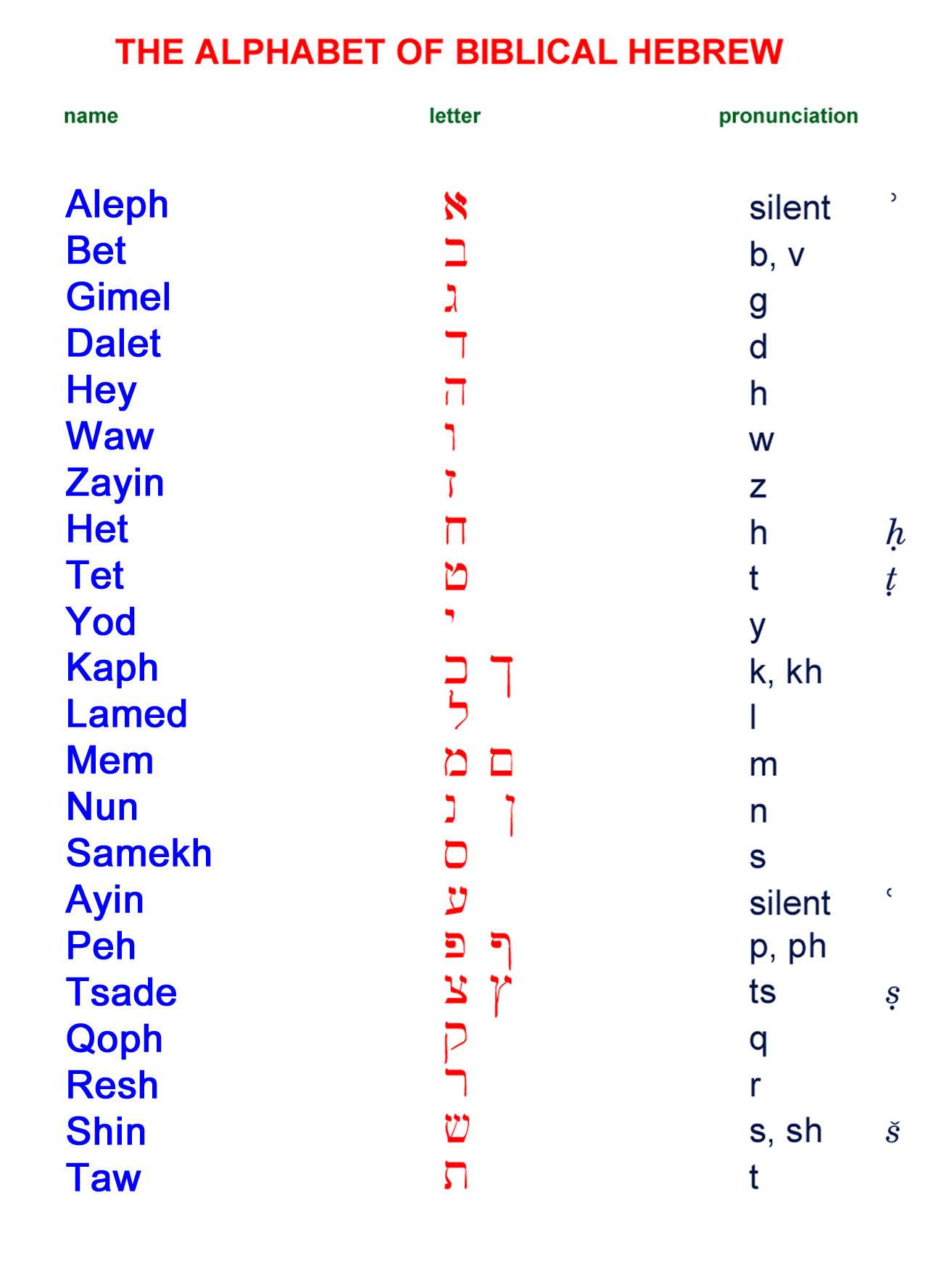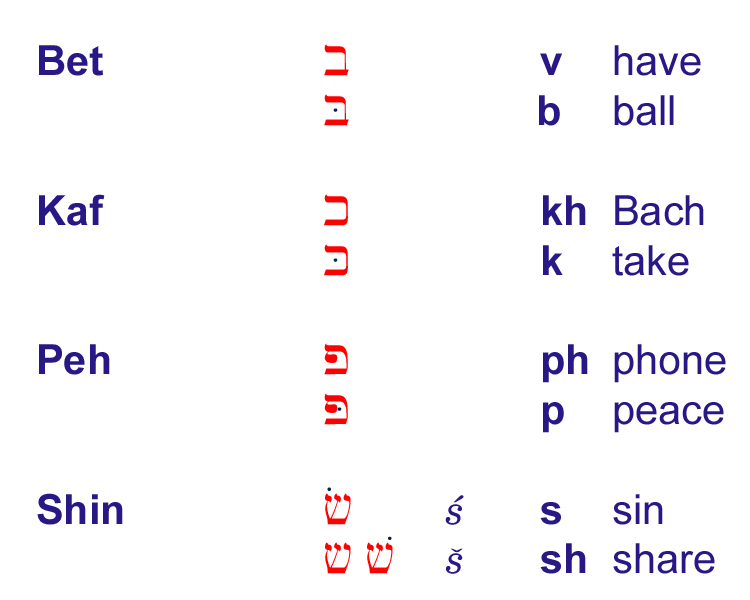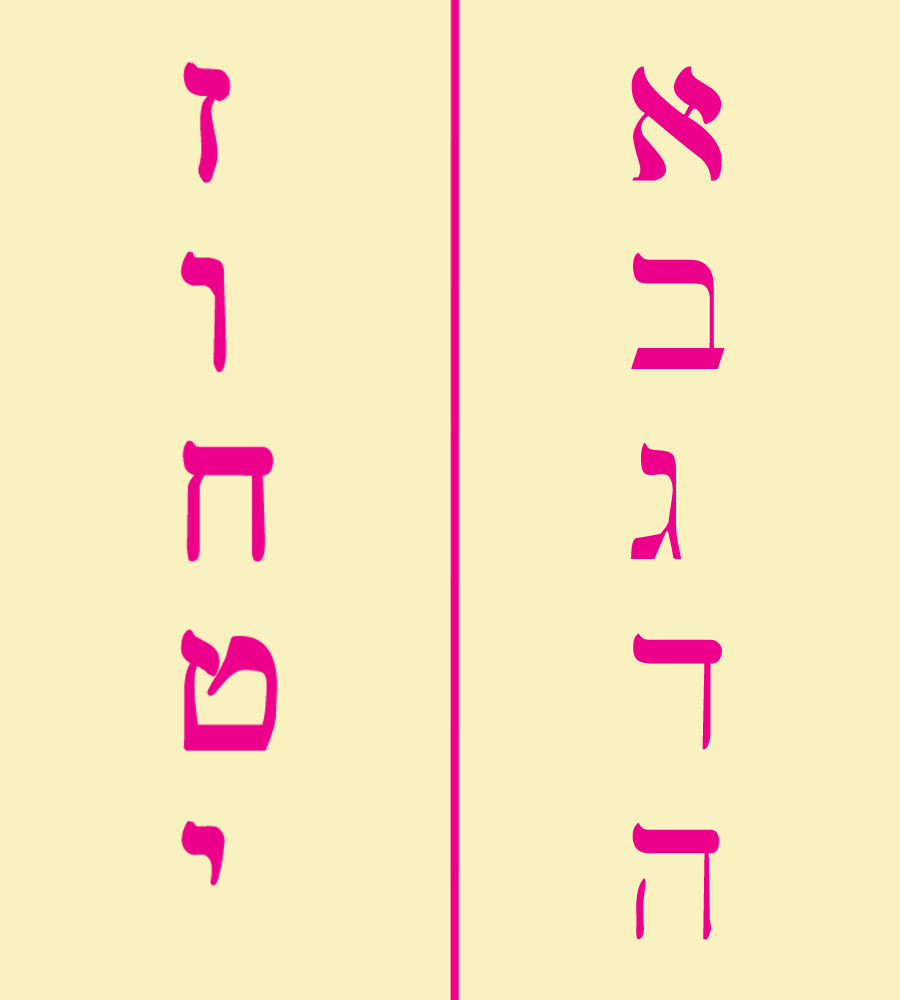Exploring the Biblical Hebrew alphabet is not just about learning letters — it’s about connecting deeply with a language that has shaped spiritual narratives for centuries.
Hebrew, with its deep roots in history, offers a unique lens through which we can understand the stories and teachings that have influenced countless lives. Each letter holds a story, contributing to the intricate narrative of the Bible.
In this guide, we dive into the alphabet that shapes the core of Hebrew Scripture, offering a direct link to the ancient words and wisdom that have influenced countless generations.
We’ll explore the origins, evolution, and profound impact of the Hebrew language on religious traditions.
What is biblical Hebrew?
Hebrew is a Semitic language.
The word Semitic comes from the name Shem, named in Genesis (6:10) as the son of Noah, whose descendants lived in the Middle East.
Phoenician, Hebrew, Aramaic, Syriac, and Arabic are all examples of Semitic languages.
They have similar characteristics, such as the presence of guttural letters formed in the pharynx or larynx and a consonantal system with three-letter word roots to connote meaning.
Besides, their common trait is that they change the form or morphology of the word root through the addition of prefixes, infixes, and suffixes to determine the precise sense and function of the word.
This language, with its three-letter root system, allows for a deep expression of meaning through various word forms.
Origins of the Hebrew alphabet
The Hebrew alphabet, with its origins deeply rooted in the ancient Israelite culture, reflects an integral aspect of their civilization.
Unlike other ancient societies, the Israelites centered their scripture around a singular deity, the Lord God of Israel.
The Torah, or Pentateuch—comprising the first five books of the Hebrew Bible: Genesis, Exodus, Leviticus, Numbers, and Deuteronomy—is traditionally attributed to Moses.
Believed to have lived around the late second millennium BC, Moses’s life and the script he might have used remain subjects of archaeological inquiry, with original manuscripts of biblical texts still undiscovered.
The development of the Hebrew alphabet is closely linked to the Phoenicians, a seafaring nation known for their navigational skills and trade networks.
Around 1400-1250 BC, they created an alphabet to facilitate communication with their diverse trading partners.
This Phoenician alphabet, consisting of 22 sound-based letters, was revolutionary compared to the complex symbols used in cuneiform and hieroglyphics.
The impact of Ketav Ashuri
The Hebrew language adopted the square script alphabet of Imperial Aramaic, known as Ketav Ashuri, or Paleo-Hebrew, which played a pivotal role in the language’s development.
This shift, traditionally attributed to Ezra during the fifth-century BC post-exilic restoration of Israel, marked a significant transition.
Hebrew texts began to be written in the Aramaic script, with the Paleo-Hebrew script continuing among the Samaritans.
Today’s Biblical Hebrew texts are thus written in this later Aramaic-derived alphabet, showcasing a fascinating journey of linguistic and cultural evolution.
The structure of the Hebrew alphabet
The Hebrew alphabet is comprised of 22 letters. These letters are all consonants.
This structure remained unchanged until a significant period in history, the Babylonian Exile in 586 BC, following the destruction of the Temple of Solomon in Jerusalem.
After this exile, Hebrew began to intertwine with Aramaic.
Aramaic emerged as the leading language across the Middle East, from around 700 BC up to the era of Christ.
Because of the Dispersion of the people of Israel to Babylon and Egypt, knowledge of pre-exilic texts was dependent on oral tradition.
This occasionally gave rise to an ambiguity of interpretation for a text written purely in consonants.

Key features of biblical Hebrew
Biblical Hebrew is a fascinating language with unique features. Considering that it’s part of the Semitic language family, Hebrew is also known for its consonantal system.
This means that most words are built around a core of three consonants that convey the basic meaning, with vowels and other consonants added to create variations of that meaning.
One of the key aspects of Biblical Hebrew is its guttural letters.
These letters, pronounced in the back of the throat, add a distinctive sound to the language. However, in modern pronunciation, some of these guttural letters might be silent or take on the sound of adjacent vowels.
Hebrew’s direction of writing is from right to left, differing from many Western languages. Additionally, it does not use capital letters, and certain letters have special final forms that appear at the end of words.
An interesting point is the letter “waw” in Biblical Hebrew, which was pronounced as a “w” sound, as יהוה, like in “Yahweh.” But in modern Hebrew ו but is known as “vav” with a “v” sound in modern Hebrew.
What’s more, in Biblical Hebrew, 6 letters—aleph, het, tet, ayin, tsade, and shin—don’t have direct equivalents in our alphabet and are often given special symbols for transliteration.
Simply put, when we try to represent Hebrew sounds in English or other languages, we use unique symbols to capture the original pronunciation as closely as possible.
Moreover, the pronunciation of three letters—Bet, Kaf, and Peh—can change based on the presence of a dot called a dagesh. With a dagesh, Bet is pronounced with a hard “b” sound, while without it, it softens to a “v.”
This system allows for a dynamic range of sounds within the Hebrew language, enriching its expressiveness and depth.

Numerical values
In Hebrew, each letter not only represents a sound but also has a numerical value.
This feature becomes particularly fascinating when we delve into numbers 1 through 10.
These numbers have dual forms—masculine and feminine—reflecting the gender of the noun they describe. For instance, the number one, אֶחָד (echad), can mean ‘one’ or ‘first,’ as highlighted in the creation narrative of Genesis 1:5, marking the first day.
During the Maccabean period in the second century BC, this numerical system was expanded. The first ten letters of the Hebrew alphabet began to embody numbers one through ten.
This association is not just a linguistic curiosity but deeply ingrained in the cultural and religious fabric of Hebrew scripture, as vividly illustrated in the representation of the Ten Commandments.
How do vowels work in Hebrew?
The vowel system in Hebrew is not as straightforward as in English. Instead, it uses a combination of letters known as “matres lectiones” (mothers of reading) and Masoretic or Tiberian vowel points to denote vowel sounds.
The letters Hey (ה), Waw (ו), and Yod (י) serve a dual purpose.
Specifically, besides their consonantal sound, they also indicate long vowel sounds when used in certain contexts. These letters help preserve the correct pronunciation of words, assisting readers in navigating the primarily consonantal script of Hebrew.
For instance, Waw can represent the sounds for long “o” or “u,” Yod for long “e” or “i,” and Hey typically marks a final long “a.”
Additionally, the Masoretic vowel points—a system developed by Jewish scholars known as Masoretes around the 9th century AD—further clarify the vowels.
These points appear as dots and dashes around the consonantal letters.
One notable point is the Shewa, which looks like a colon beneath a letter, indicating either a very short “e” sound or silence, depending on its position within a word.
The distinction between open and closed syllables is crucial in Hebrew:
- Open syllables end in a vowel and make the pronunciation of the vowel clear.
- Closed syllables end in a consonant, potentially altering the vowel sound.
Interestingly, the Hebrew alphabet’s adaptability in representing numbers, particularly from one to ten, further illustrates its depth.
Starting in the Maccabean period (2nd century BC), letters began to carry numerical values, deeply intertwining linguistic and numerical knowledge in Jewish tradition.
The Hebrew passages in the Scripture
Now let’s take a look at the specific biblical passages in Hebrew.
Hebrew Scripture, written in a language that has evolved over millennia, encapsulates the foundational texts of Judaism and Christianity.
These texts convey the complex relationship between God and humanity, the ethical and moral principles to live by, and the cultural and religious practices of the Israelite people.
The Hebrew Bible, or Tanakh, is divided into three main sections:
- Torah (Law)
- Nevi’im (Prophets)
- Ketuvim (Writings)
The Torah, believed to have been given by God to Moses, outlines laws and teachings essential to Judaism.
The Nevi’im recount the history of the Israelites and the messages of the prophets, while the Ketuvim include diverse writings such as poetry, philosophical reflections, and historical accounts.
One of the most significant aspects of biblical Hebrew is its use of an epicene personal pronoun, which does not distinguish between male and female, emphasizing the universal nature of its teachings.
The discovery of ancient manuscripts, such as the Dead Sea Scrolls, has provided invaluable insights into the original texts and their interpretation.
In fact, the Dead Sea Scrolls were discovered near Qumran in the mid-20th century.
These scrolls, some inscribed in Paleo-Hebrew and others in Aramaic script, included texts from the Pentateuch and other biblical books, all written purely in consonants.
This discovery, alongside the later contributions by the Masoretes in developing vowel notation systems, underscores the lengths to which scholars and scribes went to preserve the accuracy and integrity of Hebrew Scripture.
Biblical Hebrew vocabulary
Diving into the vocabulary of biblical Hebrew reveals a fascinating structure where each word is a window into the culture and spirituality of ancient times.
The Hebrew language is unique, especially in its use of personal pronouns. Unlike English, Hebrew has distinct words to reflect nuances in gender and number, making the language rich in detail and precision.
In Hebrew, the roots of words often share a common theme, providing insight into the interconnectedness of concepts.
For instance, the root for “child” branches out into words for “boy,” “girl,” “children,” and even “childhood,” illustrating the language’s depth in describing relationships and stages of life.
Nouns in Hebrew clearly distinguish between masculine and feminine, affecting not just the word itself but its plural form too.
- Masculine nouns typically end in “ים”
- Feminine nouns end in “ות,”
Based on this rule, learners can predict noun gender and number.
It’s equally important to discuss the verbs in biblical Hebrew.
In general, verbs in Hebrew express actions with a clarity that distinguishes completed from ongoing actions.
This distinction is crucial in understanding the narrative flow of biblical stories, where the tense can shift dramatically to highlight the action’s completion or its continuing nature.
The use of the waw-consecutive, a grammatical construction, flips the tense from past to future (or vice versa), enriching the storytelling with suspense and dynamism.
Scripture reading
Exploring the Hebrew Scriptures offers a unique window into the ancient world of the Bible.
A fascinating example is found in Genesis 3:15, where the complexity of the Hebrew text comes to life.
This passage, presented in the Masoretic “pointed text,” uses the epicene personal pronoun “הוא.” Intriguingly, it does not distinguish between “he” or “she,” leaving the reference open to interpretation as either “woman” or “seed (offspring).”
Such nuances highlight the depth and intricacy of scriptural language, inviting readers into a richer engagement with the text.
Hebrew’s right-to-left writing system further immerses the reader in the traditional context, offering a direct connection to the way these sacred texts have been read and understood.
This approach to scripture reading not only deepens one’s understanding of the biblical narrative but also preserves the linguistic heritage of the Hebrew language.
Final thoughts
Learning Biblical Hebrew opens a window to the profound depths of scriptural texts, offering insights that transcend translations.
Here are a few key takeaways from this guide:
- Biblical Hebrew’s consonantal structure: The language’s reliance on consonants and the development of vowel notation by the Masoretes enhances the depth of scriptural interpretation.
- The influence of Aramaic: The transition from Paleo-Hebrew to the square script Aramaic alphabet marks a significant evolution in the written form of Hebrew, reflecting historical shifts and cultural exchanges.
- Vocabulary and grammar in the Scripture: Understanding the roots and patterns of Hebrew words opens new dimensions of meaning in biblical stories and principles.
- The role of scripture reading: Engaging with the Hebrew text of scriptures like Genesis 3:15, with its nuanced language, invites a deeper appreciation of the Bible’s original context and messages.
As we wrap up, let’s recognize the transformative power of learning Biblical Hebrew.
It’s not just about acquiring knowledge — it’s about deepening your spiritual journey through a closer, more authentic engagement with the word of God.













